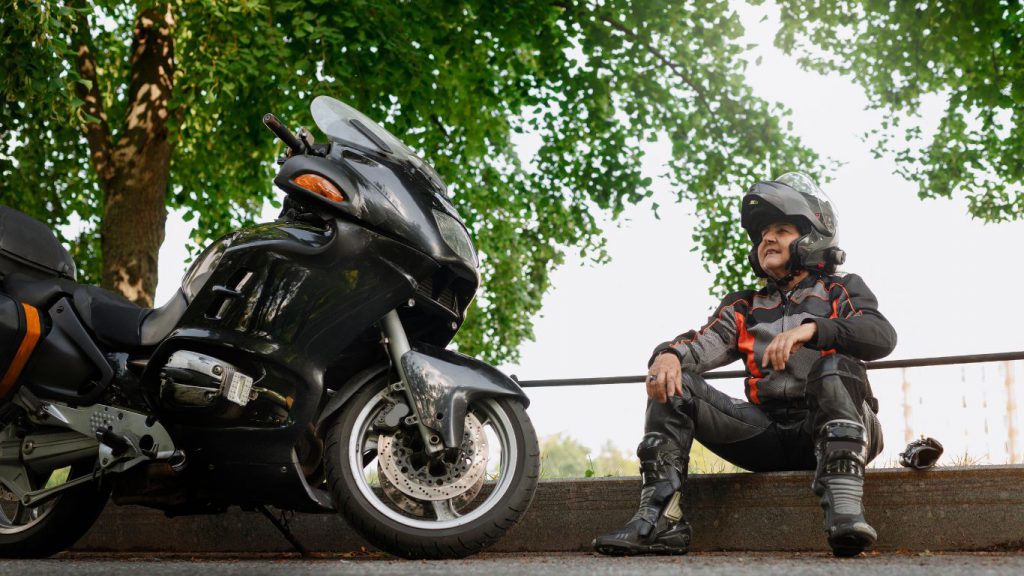Riding a motorcycle isn’t just about getting from point A to point B; it’s an exhilarating adventure that offers freedom, excitement, and a unique connection with the road. For a novice, starting this journey might seem daunting, but with the right approach and mindset, anyone can become a skilled and confident biker. In this guide, we’ll outline the steps and tips to help you progress from a novice rider to a proficient motorcyclist.
1. Start with a Motorcycle Safety Course
One of the best ways to kick-start your journey to becoming a skilled biker is by enrolling in a motorcycle safety course. These courses are designed to teach you the fundamentals of riding, safety measures, and traffic rules. An experienced instructor will guide you through various aspects of riding, giving you a solid foundation to build upon.
2. Choose the Right Motorcycle
Selecting the right motorcycle is a critical step in your journey. For beginners, it’s advisable to start with a bike that is manageable and easy to handle. Consider factors such as engine size, weight, and seat height. As you gain confidence and experience, you can gradually move on to more powerful motorcycles.
3. Gear Up for Safety
Investing in quality riding gear is non-negotiable. A DOT-approved helmet, protective riding jacket, gloves, pants, and sturdy boots are essential gear that provides protection in case of a fall or accident. Safety should always be your priority when choosing and wearing riding gear.
4. Master the Basics in a Controlled Environment
Before hitting the open road, spend time practicing in a safe and controlled environment. Master the basics like starting and stopping, turning, shifting gears, and braking. Familiarize yourself with the feel and balance of the motorcycle.
5. Progress Gradually
Don’t rush the learning process. Progress at your own pace and gradually challenge yourself with more complex skills. Build your confidence and skills step by step. It’s essential to be patient with yourself and not push beyond your comfort zone too quickly.
6. Learn Defensive Riding Techniques
Understanding defensive riding techniques is crucial for your safety on the road. Always be aware of your surroundings and anticipate the actions of other motorists. Learn how to maneuver to avoid potential hazards and react to unexpected situations.
7. Practice Riding in Different Conditions
Ride in various weather and road conditions to gain experience and confidence. Different conditions, such as rain, wind, or varied road surfaces, require adjustments in your riding style and technique. The more diverse your riding experiences, the better prepared you’ll be for any situation.
8. Understand Motorcycle Maintenance
Familiarize yourself with basic motorcycle maintenance tasks. Regularly check and maintain tire pressure, oil levels, brakes, lights, and other critical components. Keeping your motorcycle in top condition is vital for both performance and safety.
9. Stay Informed and Updated
Stay informed about the latest motorcycle laws, safety guidelines, and riding techniques. Read books, blogs, and participate in forums to expand your knowledge and keep up-to-date with industry trends and advancements.
10. Ride with Experienced Riders
Riding with experienced bikers provides an opportunity to learn from their expertise. They can offer valuable tips, guidance, and feedback on your riding technique. Additionally, group rides can enhance your confidence and give you exposure to different riding styles.
11. Seek Professional Training
Consider advanced motorcycle training courses to enhance your riding skills further. These courses focus on specialized skills, such as advanced cornering techniques, emergency braking, and evasive maneuvers. The knowledge gained can significantly improve your safety and riding ability.
12. Join Riding Communities
Being part of a motorcycle riding community can be incredibly rewarding. You can share experiences, gain insights, and even participate in group rides or events. Communities offer a supportive network and a platform to learn and grow as a rider.
13. Practice Defensive Communication
Use hand signals and clear communication gestures when riding in a group or on the road. Effective communication with other riders and motorists enhances safety and coordination, especially in group riding situations.
14. Challenge Yourself Responsibly
Participate in safe and organized motorcycle events, rallies, or charity rides. These events provide a chance to challenge yourself, meet other riders, and contribute to meaningful causes within the riding community.
15. Stay Passionate and Enjoy the Ride
Above all, maintain your passion for riding and enjoy every moment on your motorcycle. Embrace the joy, freedom, and camaraderie that motorcycling offers. A passionate and enthusiastic approach will fuel your journey to becoming a skilled biker.
In conclusion, the journey from a novice to a skilled biker requires dedication, practice, and continuous learning. Always prioritize safety, stay patient, and never stop improving your riding skills. With the right mindset and a passion for riding, you’ll evolve into a confident and proficient motorcyclist. Enjoy the ride and stay safe on the road!

